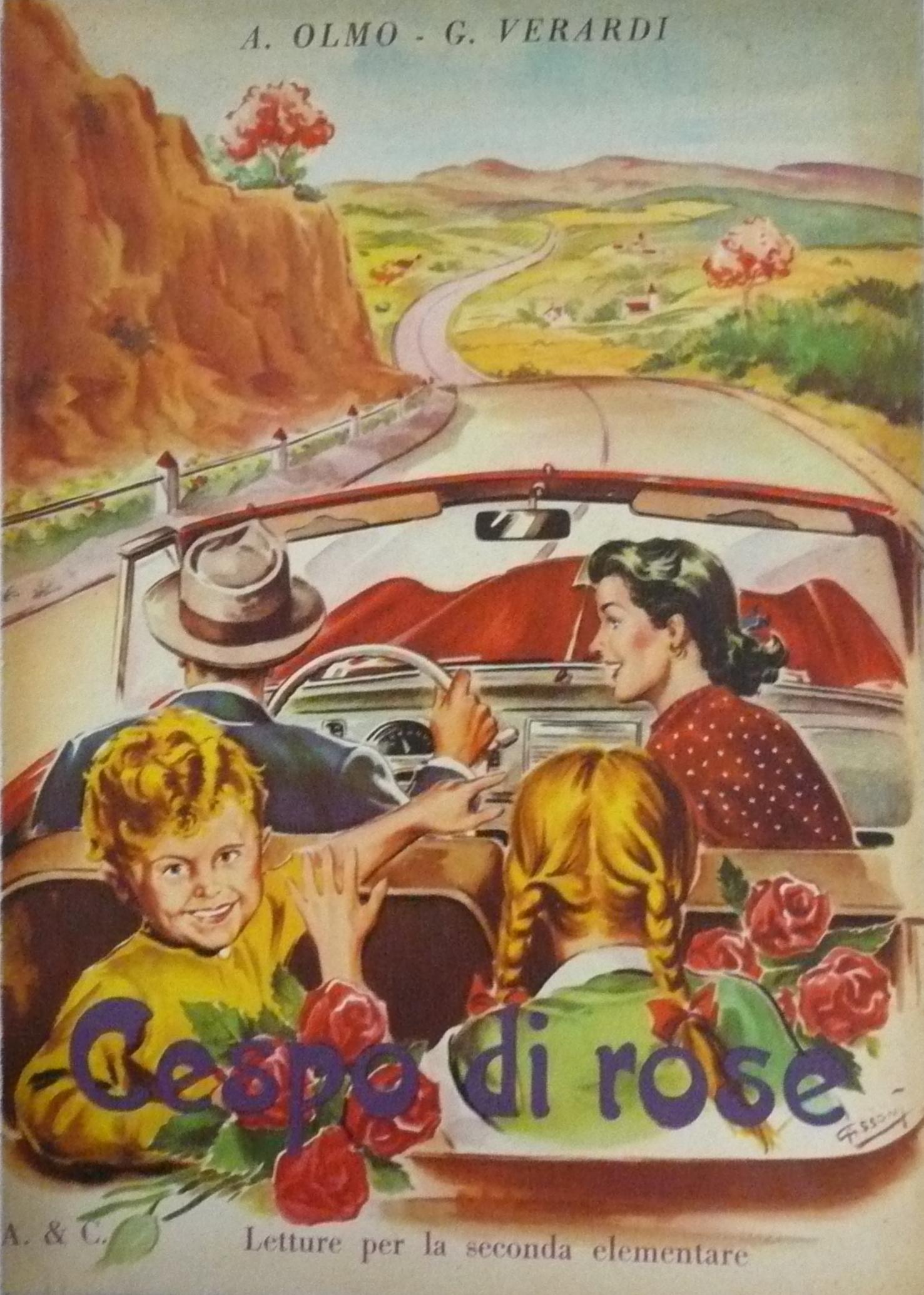
Italy
 |
Olmo, Angelo; Verardi, Giuseppe. Cespo di rose - Letture per la seconda elementare. Milano, A & C, [1954]. 167 p. |
When the Brothers arrived at Torino, in the Piedmont, in 1829 to take over the management of the educational centers of the ROMI (Regia Opera della MendicitÓ Istruita / Royal Charity for the Instruction of Beggars), there were very few textbooks for the elementary education. In the schools of Torino, the teaching was almost exclusively based on loose sheets for the catechism of the diocese, the Office of the Virgin Mary in Latin (also containing the main prayers), and the method to serve mass for the choir boys. The teaching of arithmetic was limited to the learning of the four operations, and did not always go that far.
The Lasallian method, described in The Conduct of Schools of John Baptist de La Salle, corrected and revised by various General Chapters of the Institute, left aside Latin, used only the mother tongue, insisted on a personal study of the catechism, included many spelling exercises and tabled mainly upon a solid learning of arithmetic, using the decimal system.
The textbooks published in Torino by the Brothers (a Nuovo trattato elementare di aritmetica published in Torino in 1833 is preserved; others were probably published before) fit perfectly in the Lasallian tradition because they are inspired by previous textbooks and contain a great number of teaching tools for students and teachers as well.
The Brothers had received adequate assurances concerning the liberty to fully use their own method. Due to the rarity and poor quality of the existing textbooks, they began by translating in Italian the textbooks of their French fellows. They had done the same thing in Rome, in Corsica, ChambÚry, and so on. Later, the preferred to write new textbooks in order to better adapt them to local needs. As soon as they were published, their textbooks were approved by the managers of the schools under the authority of the ROMI and approved by the academic authorities of the city.
From 1833 to 1855 (when the Brothers were managing all the elementary schools for boys of Torino), their textbooks were used by almost all the schools of Torino. Later, the Brothers specialized in a certain number of fields where they knew they were more competent, such as arithmetic, drawing, geography, spelling and religion. From 1866, their publishing house (called A&C for Andorno & Cathiard, two Visitors of that period) occupied a large sector of the production of textbooks in those fields.
Obviously, those textbooks may seem old-fashioned to us, but they formed the basis of the modern teaching methods of the Brothers.
Grammar books and books of introduction to the art of writing teach the definite and binding rules of a language and give a solid basis for speaking and writing.
In arithmetic and geometry, we perceive the search for perfection, the command of the methods of demonstration, the love of clarity and universal order, as well as the cult of beauty in the tables and models.
At the same time, those Lasallian texts reflect the evolution of the knowledge of their authors and of their educational methods. It would be necessary to analyze those textbooks in the light of The Conduct of Schools and to find to what extent they are inspired by the methods of the public schools of Piedmont and to what extent, on the other hand, they influenced the authors of textbooks in Piedmont.
More largely, it would be possible to detect, through those textbooks, the influence of the Lasallian educational methods in Savoy, the Italian dukedoms, the Pontifical States, where the publications for schools were more or less, in the beginning, adaptations of French models, but were quite rapidly replaced by modified versions in Italian and by original books specific to the region and country.
The ideological aspect must not be forgotten. The authors, trained in and by a clearly Christian vision of life, and within a Lasallian perspective, did not in any way hide their religious convictions when they wrote textbooks for students, where there were obvious links between convictions and knowledge. That is another difference between old and recent textbooks.
During the World War II, the premises of the A&C publishing house were seriously damaged (nearly total destruction by a bombing, followed by a fire). The majority of the stocked textbooks and of the related documentation was destroyed.
However, the publishing house maintained its programs during the post-war period, especially for the elementary level, until the total interruption of its activities in 1978. Other national (Italian) firms were much better organized to produce publications for the secondary level.
Brother Secondino Scaglione
(Taken from Rivista lasalliana, 1998, 2, p. 96-115)Magazines on Teaching Methods and Catechesis
Rivista lasallianaFounded in Torino in 1934, that quarterly magazine publishes studies on our Founder and the Lasallian origins, on the Lasallian spirituality and teaching methods, on the current events in education throughout the world. Written entirely by Brothers during the first decades, the magazine now benefits from the collaboration of secular experts working in Lasallian institutions of Italy or other European countries. About 50 libraries of State faculties subscribe to the quasi multilingual magazine, which has a circulation of 1250 copies.
Sussidi per la catechesi (Aids for Catechesis)
That magazine, launched in 1935 under the initiative of the District of Torino, had a quite large circulation, especially in the decades of 1950 and 1960, among the catechist of the parishes and the teachers of religion in the schools, including the public schools. The magazine, that was not published from 1978 to 1983, has reappeared, but only within the denominational educational network.